

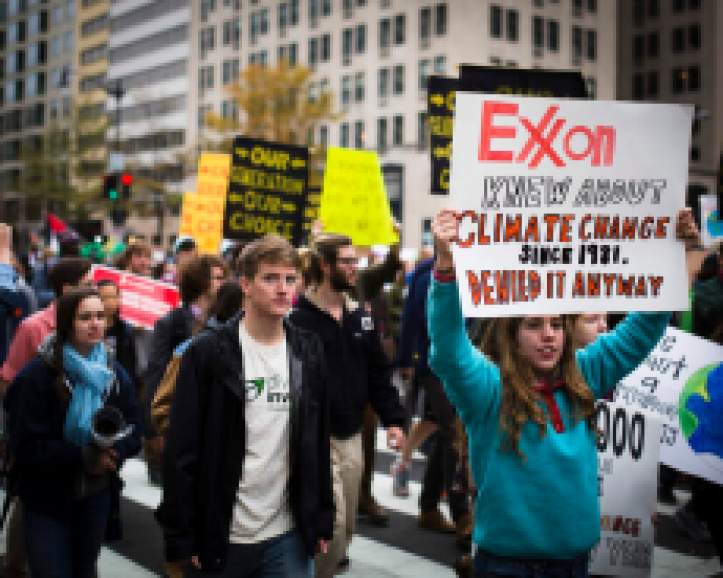

The globe is on fire, global warming, the average temperature on earth is rising. The concept of disaster. This image elements furnished by NASA

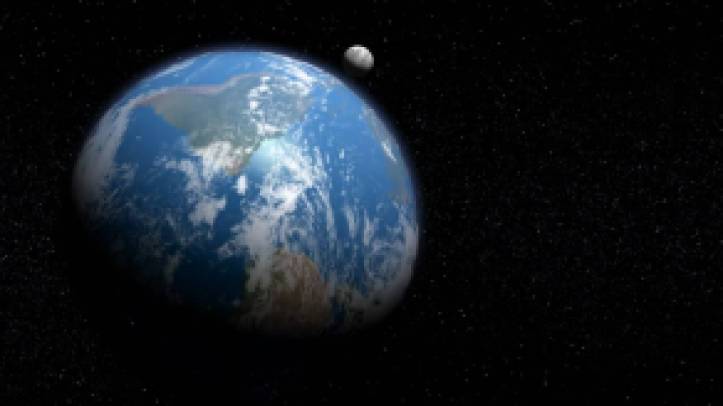
PLANETARY ENVIRONMENTALISM AND ITS IMPLIED ROLE OF HUMANS AS CARETAKERS OF THE PLANET EARTH IN THE ANTHROPOCENE.
In his paper “Geology of Mankind”, geologist Paul Crutzen calls on geologists to use the term ‘Anthropocene’ for the current “human-dominated” geological epoch, that sits piggy-back on the Holocene [LINK] . Since then there have been a number of papers, mostly by Will Steffen, on the Anthropocene as seen in the bibliography below. A succinct summary of this concept is provided by Noam Chomsky in the video below. It describes a state of the world in which humans are in control of the planet and are now its keepers and caretakers. The fate of the planet now depends on how well humans take care of it. This is the extent to which global environmentalism has been taken and and the context in which the ozone crisis and the climate crisis of our time should be understood.
THE IMPOSSIBILITY OF PLANETARY ENVIRONMENTALISM
In this post we argue that the concept of the Anthropocene and of human caused planetary catastrophe by way of things like the industrial economy running on fossil fuels are inconsistent with the relative insignificance of humans on a planetary scale.
Consider for example, that even as humans are worried about things like carbon pollution and the population bomb in terms of the planet being overwhelmed by the sheer number of humans on earth, humans, like all life on earth, are carbon life forms created from the carbon that came from the mantle of the planet but a rather insignificant portion of it. In terms of total weight, humans constitute 0.05212% of the total mass of life on earth. Yet we imagine that our numbers are so huge that the planet will be overwhelmed by our population bomb. All the life on earth taken together is 0.000002875065% of the crust of the planet by weight. The crust of the planet where we live and where we have things like land, ocean, atmosphere, climate, and carbon life forms, is 0.3203% of the planet by weight. The other 99.6797% of the planet, the mantle and core, is a place where we have never been and will never be and on which we have no impact whatsoever. In terms of the much feared element carbon that is said to cause planetary devastation by way of climate change and ocean acidification, a mass balance shows that the crust of the planet where we live contains 0.201% of the planet’s carbon with the other 99.8% of the carbon inventory of the planet being in the mantle and core.
CONCLUSIONS
- The crust of the planet where we live is an insignificant portion of the planet.
- Life on earth is an insignificant portion of the crust of the planet.
- Humans are an insignificant portion of life on earth.
Although it is true that humans must take care of their environment, we propose that the environment should have a more rational definition because the mass balance above does not show that humans are a significant force on a planetary scale or that they are in a position to either save it or to destroy it even with the much feared power of their fossil fueled industrial economy. And that implies that it is not possible that there is such a thing as an Anthropocene in which humans are the dominant geological force of the planet.
Like ants and bees, humans are social creatures that live in communities of humans so that when they look around all they see are humans. This is the likely source of our human oriented view of the world. Paul Ehrlich’s overpopulation theory is derived from his first visit to India which he described as “people people people people people!” It is this biased view of the planet that makes it possible for us to extrapolate Calcutta to the planet and come up with the fearful image described by Jeff Gibbs as “Have you every wondered what would happen if a single species took over an entire planet?”
RELATED POSTS
- THE HUMANS MUST SAVE THE PLANET [LINK]
- THE ISSUE IS FOSSIL FUELS NOT CLIMATE CHANGE: [LINK]
- NO EVIDENCE THAT ATMOSPHERIC COMPOSITION IS RESPONSIVE TO FOSSIL FUEL EMISSIONS: [LINK]
- NO EVIDENCE THAT SURFACE TEMPERATURE IS RESPONSIVE CUMULATIVE FOSSIL FUEL EMISSIONS AS CLAIMED IN THE “TRANSIENT CLIMATE RESPONSE TO CUMULATIVE EMISSIONS” [LINK]
- NO EVIDENCE THAT CLIMATE ACTION WILL CHANGE THE RATE OF WARMING: [LINK]
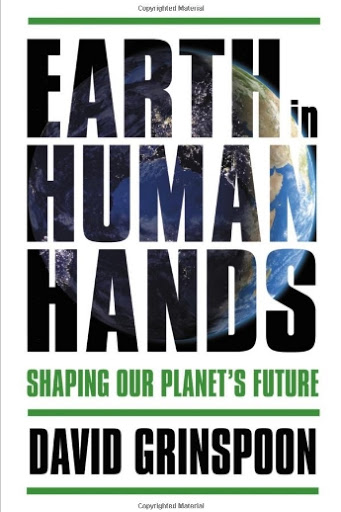
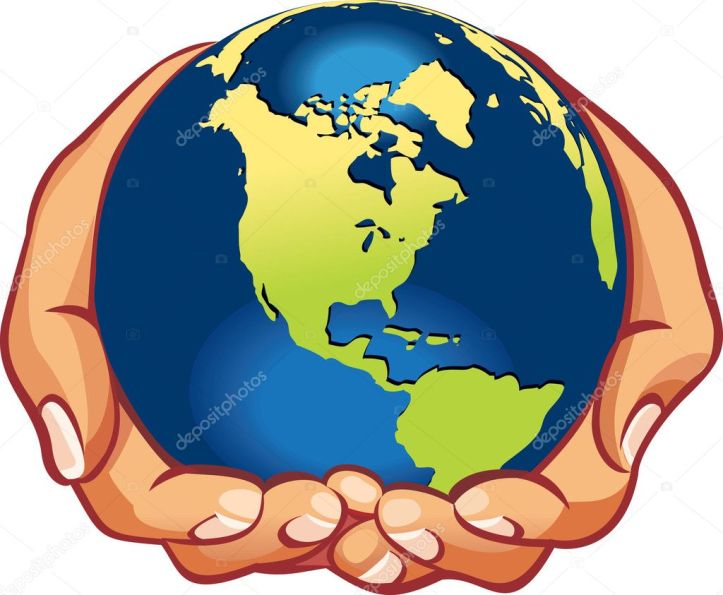
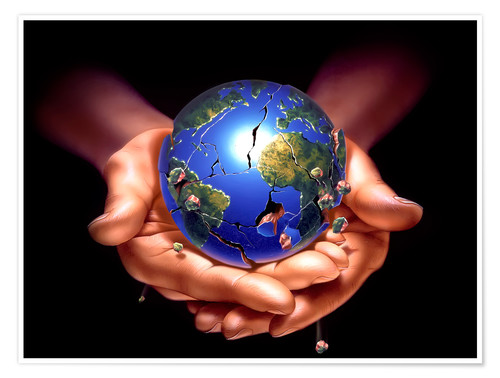
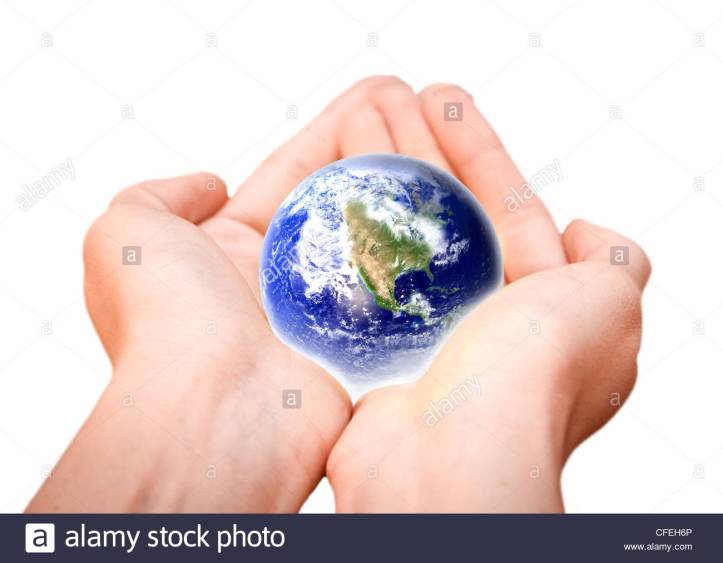

ANTHROPOCENE BIBLIOGRAPHY
- Anthropocene doomsday scenario: Steffen 2018: Steffen, Will, et al. “Trajectories of the Earth System in the Anthropocene.” Proceedings of the National Academy of Sciences (2018): 201810141. {We explore the risk that self-reinforcing feedbacks could push the Earth System toward a planetary threshold that, if crossed, could prevent stabilization of the climate at intermediate temperature rises and cause continued warming on a “Hothouse Earth” pathway even as human emissions are reduced. Crossing the threshold would lead to a much higher global average temperature than any interglacial in the past 1.2 million years and to sea levels significantly higher than at any time in the Holocene. We examine the evidence that such a threshold might exist and where it might be. If the threshold is crossed, the resulting trajectory would likely cause serious disruptions to ecosystems, society, and economies. Collective human action is required to steer the Earth System away from a potential threshold and stabilize it in a habitable interglacial-like state. Such action entails stewardship of the entire Earth System—biosphere, climate, and societies—and could include decarbonization of the global economy, enhancement of biosphere carbon sinks, behavioral changes, technological innovations, new governance arrangements, and transformed social values.}
- Anthropocene doomsday scenario: Steffen 2015: Steffen, Will, et al. “The trajectory of the Anthropocene: the great acceleration.” The Anthropocene Review 2.1 (2015): 81-98. {The ‘Great Acceleration’ graphs, originally published in 2004 to show socio-economic and Earth System trends from 1750 to 2000, have now been updated to 2010. In the graphs of socio-economic trends, where the data permit, the activity of the wealthy (OECD) countries, those countries with emerging economies, and the rest of the world have now been differentiated. The dominant feature of the socio-economic trends is that the economic activity of the human enterprise continues to grow at a rapid rate. However, the differentiated graphs clearly show that strong equity issues are masked by considering global aggregates only. Most of the population growth since 1950 has been in the non-OECD world but the world’s economy (GDP), and hence consumption, is still strongly dominated by the OECD world. The Earth System indicators, in general, continued their long-term, post-industrial rise, although a few, such as atmospheric methane concentration and stratospheric ozone loss, showed a slowing or apparent stabilisation over the past decade. The post-1950 acceleration in the Earth System indicators remains clear. Only beyond the mid-20th century is there clear evidence for fundamental shifts in the state and functioning of the Earth System that are beyond the range of variability of the Holocene and driven by human activities. Thus, of all the candidates for a start date for the Anthropocene, the beginning of the Great Acceleration is by far the most convincing from an Earth System science perspective.}
- Anthropogenic doomsday scenario: McGill 2015 : McGill, Brian J., et al. “Fifteen forms of biodiversity trend in the Anthropocene.” Trends in ecology & evolution 30.2 (2015): 104-113. {Humans are transforming the biosphere in unprecedented ways, raising the important question of how these impacts are changing biodiversity. Here we argue that our understanding of biodiversity trends in the Anthropocene, and our ability to protect the natural world, is impeded by a failure to consider different types of biodiversity measured at different spatial scales. We propose that ecologists should recognize and assess 15 distinct categories of biodiversity trend. We summarize what is known about each of these 15 categories, identify major gaps in our current knowledge, and recommend the next steps required for better understanding of trends in biodiversity.}
- Anthropocene doomsday scenario: Dirzo, 2014 : Dirzo, Rodolfo, et al. “Defaunation in the Anthropocene.” science 345.6195 (2014): 401-406. {We live amid a global wave of anthropogenically driven biodiversity loss: species and population extirpations and, critically, declines in local species abundance. Particularly, human impacts on animal biodiversity are an under-recognized form of global environmental change. Among terrestrial vertebrates, 322 species have become extinct since 1500, and populations of the remaining species show 25% average decline in abundance. Invertebrate patterns are equally dire: 67% of monitored populations show 45% mean abundance decline. Such animal declines will cascade onto ecosystem functioning and human well-being. Much remains unknown about this “Anthropocene defaunation”; these knowledge gaps hinder our capacity to predict and limit defaunation impacts. Clearly, however, defaunation is both a pervasive component of the planet’s sixth mass extinction and also a major driver of global ecological change.}
- Anthropocene doomsday scenario: Braje 2013 : Braje, Todd J., and Jon M. Erlandson. “Human acceleration of animal and plant extinctions: A Late Pleistocene, Holocene, and Anthropocene continuum.” Anthropocene 4 (2013): 14-23. {One of the most enduring and stirring debates in archeology revolves around the role humans played in the extinction of large terrestrial mammals (megafauna) and other animals near the end of the Pleistocene. Rather than seeking a prime driver (e.g., climate change, human hunting, disease, or other causes) for Pleistocene extinctions, we focus on the process of human geographic expansion and accelerating technological developments over the last 50,000 years, changes that initiated an essentially continuous cascade of ecological changes and transformations of regional floral and faunal communities. Human hunting, population growth, economic intensification, domestication and translocation of plants and animals, and landscape burningand deforestation, all contributed to a growing human domination of earth’s continental and oceanic ecosystems. We explore the deep history of anthropogenic extinctions, trace the accelerating loss of biodiversity around the globe, and argue that Late Pleistocene and Holocene extinctions can be seen as part of a single complex continuum increasingly driven by anthropogenic factors that continue today.}
- Anthropocene doomsday scenario: Steffen 2011: Steffen, Will, et al. “The Anthropocene: From global change to planetary stewardship.” Ambio 40.7 (2011): 739. {Over the past century, the total material wealth of humanity has been enhanced. However, in the twenty-first century, we face scarcity in critical resources, the degradation of ecosystem services, and the erosion of the planet’s capability to absorb our wastes. Equity issues remain stubbornly difficult to solve. This situation is novel in its speed, its global scale and its threat to the resilience of the Earth System. The advent of the Anthropence, the time interval in which human activities now rival global geophysical processes, suggests that we need to fundamentally alter our relationship with the planet we inhabit. Many approaches could be adopted, ranging from geo-engineering solutions that purposefully manipulate parts of the Earth System to becoming active stewards of our own life support system. The Anthropocene is a reminder that the Holocene, during which complex human societies have developed, has been a stable, accommodating environment and is the only state of the Earth System that we know for sure can support contemporary society. The need to achieve effective planetary stewardship is urgent. As we go further into the Anthropocene, we risk driving the Earth System onto a trajectory toward more hostile states from which we cannot easily return.}
- Anthropocene doomsday scenario: Wagler 2011 : Wagler, Ron. “The anthropocene mass extinction: An emerging curriculum theme for science educators.” The American Biology Teacher 73.2 (2011): 78-83. {There have been five past great mass extinctions during the history of Earth. There is an ever-growing consensus within the scientific community that we have entered a sixth mass extinction. Human activities are associated directly or indirectly with nearly every aspect of this extinction. This article presents an overview of the five past great mass extinctions; an overview of the current Anthropocene mass extinction; past and present human activities associated with the current Anthropocene mass extinction; current and future rates of species extinction; and broad science-curriculum topics associated with the current Anthropocene mass extinction that can be used by science educators. These broad topics are organized around the major global, anthropogenic direct drivers of habitat modification, fragmentation, and destruction; overexploitation of species; the spread of invasive species and genes; pollution; and climate change.}
- Anthropocene doomsday scenario: Zalasiewicz 2010 : Zalasiewicz*, Jan, et al. “The new world of the Anthropocene.” (2010): 2228-2231. {Global events such as mass extinctions, the onset of Ice Ages, and changes in geochemistry linked with changes in atmospheric chemistry are timeposts in geological strata. In the timeline for Earth history, they allow segmentation of its 4.6 billion year existence into eons, eras, periods, and epochs. As human activity makes its recently initiated yet globally extensive mark that is leading to mass extinctions, changes in atmospheric and marine chemistry, and altering terrestrial features, should a new epoch be declared? Can such an Anthropocene be geologically standardized in strata? Zalasiewicz et al make their case in this article featured in ES&T’s April 1, 2010 print issue recognizing the 40th Anniversary of Earth Day.}
- Anthropocene doomsday scenario: Saxon 2008 : Saxon, Earl. “Noah’s Parks: A partial antidote to the Anthropocene extinction event.” Biodiversity 9.3-4 (2008): 5-10. {Climate change will rapidly alter the abiotic environment of many localities leading to significant losses of biodiversity in ecosystems unable to adapt quickly. However, local extirpation will be least likely where environmental change is slowest. Such locations will offer refugia for species with narrow environmental ranges, provide persistent sources of colonists, offer transitory homes for dispersers and serve as platform sites on which new community assemblages develop. Consequently, networks of protected areas that include such sites will conserve more biodiversity. Conventional protected area network selection algorithms give priority to areas with the lowest current cost. I added projected environmental change as a cost factor. I applied the modified algorithm in three arctic ecoregions where climate change is predicted to be extremely rapid and to 20 tropical ecoregions where the pace of climate change will be slower but many species are vulnerable to small changes. I identified protected area networks that protect places where change will be slowest in all ecoregions. These climate-adaptive protected area networks differ substantially from both current protected area networks and near-optimal networks that are based only on current costs. The modified method will help protected area planners to acquire potential climate refugia and to help implement adaptive conservation strategies for potential refugia that are already protected. It will also help reduce the risk that projected refugia are unknowingly allocated to land uses incompatible with their critical role in biodiversity conservation.}
- Anthropocene doomsday scenaro: Steffen 2007: Steffen, Will, Paul J. Crutzen, and John R. McNeill. “The Anthropocene: are humans now overwhelming the great forces of nature.” AMBIO: A Journal of the Human Environment 36.8 (2007): 614-621. {We explore the development of the Anthropocene, the current epoch in which humans and our societies have become a global geophysical force. The Anthropocene began around 1800 with the onset of industrialization, the central feature of which was the enormous expansion in the use of fossil fuels. We use atmospheric carbon dioxide concentration as a single, simple indicator to track the progression of the Anthropocene. From a preindustrial value of 270–275 ppm, atmospheric carbon dioxide had risen to about 310 ppm by 1950. Since then the human enterprise has experienced a remarkable explosion, the Great Acceleration, with significant consequences for Earth System functioning. Atmospheric CO2 concentration has risen from 310 to 380 ppm since 1950, with about half of the total rise since the preindustrial era occurring in just the last 30 years. The Great Acceleration is reaching criticality. Whatever unfolds, the next few decades will surely be a tipping point in the evolution of the Anthropocene.}
— Thongchai Thailand

